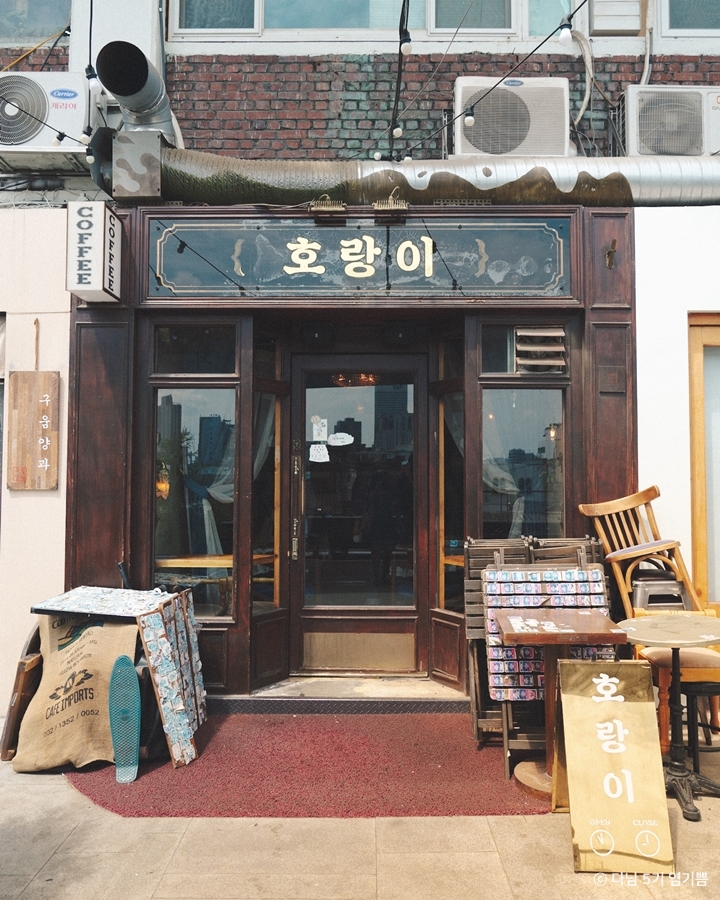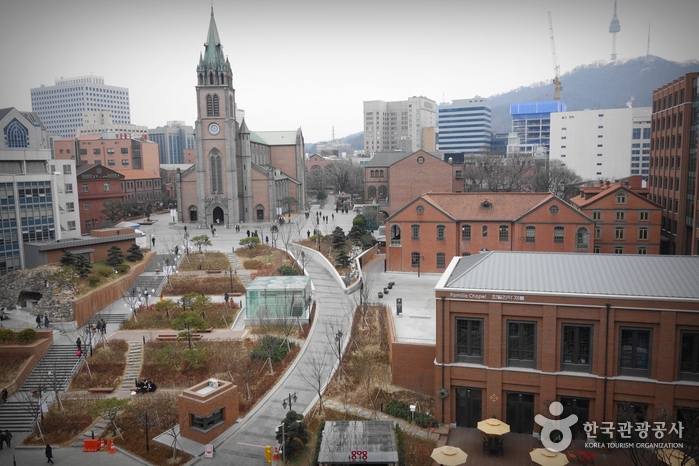Uniqlo - Lotte Young Plaza Branch [Tax Refund Shop] (유니클로 롯데영플라자)
1.2Km 2024-04-18
6F, 67, Namdaemun-ro, Jung-gu, Seoul
-
Muji - Lotte Young Plaza Branch [Tax Refund Shop] (MUJI 롯데영플라자)
1.2Km 2024-04-19
5F, 67, Namdaemun-ro, Jung-gu, Seoul
-
Tosokchon Samgyetang (토속촌삼계탕)
1.2Km 2024-03-12
5 Jahamun-ro 5-gil, Jongno-gu, Seoul
+82-2-737-7444
Tosokchon Samgyetang is a restaurant specializing in samgyetang (ginseng chicken soup) near Gyeongbokgung Palace. It is housed in several renovated traditional hanok buildings, exuding a nostalgic atmosphere. Samgyetang is a traditional Korean nutritious food made by simmering cleaned young chicken with ginseng, jujube, sweet rice batter, and various nuts. The thick broth of samgyetang, served alongside ginseng liquor, stimulates the appetite. Diced radish kimchi and cabbage kimchi are served as basic side dishes.
Horangii (호랑이)
1.2Km 2023-12-22
157 Eulji-ro, Jung-gu, Seoul
Horangii Coffee, located in Euljiro, Seoul, boasts a retro yet hip atmosphere. Furniture and picture frames with traces of time gone by and impressive props with the concept of a tiger come together to create a distinct atmosphere unique to this place. There are tables both inside and outside the cafe, but due to its small size, it is always crowded with customers. The signature menu items here are Horangii Latte and Fruit Sando. Horangii Latte has an impressive savory yet sweet flavor. Fruit Sando, made with whole fresh seasonal fruits, combines with soft whipped cream for a unique taste.
Myeongdong Cathedral (서울 명동성당)
1.2Km 2022-12-27
74, Myeongdong-gil, Jung-gu, Seoul
Myeongdong Cathedral is the Church for Archdiocese of Seoul and was also the birthplace for the Roman Catholic Church community in Korea. The church houses the remains of several individuals: Bishop Laurent Joseph Marie Imbert (1796-1839), and priests Peter Simon (1803-1839), James (Jacques Honor Chastan, 1803-1839) and Pourthie Jean Antoine Charles (1830-1866) and four martyrs.
Myeongdong Cathedral is located in downtown Seoul and tourists frequently come and visit the place. Near the cathedral are other tourism spots such as Namsangol Hanok Village preserving Korean traditional houses, N Seoul Tower overlooking Seoul and Namdaemun Market, a traditional market with a wide variety of food and goods.
Nolbu Budaejjigae Myeongdong (놀부부대찌개 명동)
1.2Km 2024-03-11
16-1, Myeongdong, 10-gil, Jung-gu, Seoul
+82-2-3789-0110
Situated in Myeongdong, Nolbu Budaejjigae in Myeongdong is exclusively dedicated to budae jjigae (sausage jjigae). Budae jjigae is a typical Korean fusion food consisting of ham, sausage, kimchi, extra instant noodles, tiny rice cakes, glass noodles, and spicy seasonings. They use selected ham and sausage in a bone broth, and fresh noodles that are not fried, giving the dish a light and refreshing flavor. Patrons have the option to spicy stir-fried small intestine and shrimp hot pot. The seasoned spicy stir-fried webfoot octopus or spicy stir-fried chicken cooked on an iron plate is also a must-try.
Olive Young - Myeongdong Branch [Tax Refund Shop] (올리브영 명동점)
1.2Km 2024-06-26
14, Myeongdong 8-gil, Jung-gu, Seoul
-
Chebudong Janchijip Dwaejigalbi (체부동잔치집돼지갈비)
1.3Km 2024-03-18
24 Jahamun-ro 1-gil, Jongno-gu, Seoul
+82-2-722-3555
Chebudong Janchijip Dwaejigalbi is a restaurant where marinated pork galbi are grilled over charcoal fire. It offers various side dishes along with rich soybean paste jjigae. Enjoying cold buckwheat noodles with the tender marinated pork galbi, which are well-aged, is also recommended. Additionally, there are individual menu items such as dubu jeongol (bean curd hot pot), hoe naengmyeon (cold buckwheat noodles with raw fish), bibimbap, and gamjajeon (potato pancake).
![Uniqlo - Lotte Young Plaza Branch [Tax Refund Shop] (유니클로 롯데영플라자)](http://tong.visitkorea.or.kr/cms/resource/05/2888605_image2_1.jpg)
![Muji - Lotte Young Plaza Branch [Tax Refund Shop] (MUJI 롯데영플라자)](http://tong.visitkorea.or.kr/cms/resource/78/2889078_image2_1.jpg)
![Harvad Eyewear [Tax Refund Shop] (하버드안경)](http://tong.visitkorea.or.kr/cms/resource/11/3314811_image2_1.jpg)



 English
English
 한국어
한국어 日本語
日本語 中文(简体)
中文(简体) Deutsch
Deutsch Français
Français Español
Español Русский
Русский